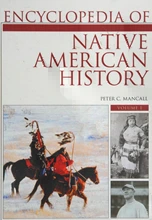One of four webpages with Native American books. This page has Native American history books pdf, and Indian reference books pdf.
Check “Media Type” in left column of Internet Archive pages for audio, movie and image files.
Table of contents
Native American Pages at Century Past
Topics – Native American History PDF – Native American Reference Books
Click on any topic to find dozens, or even hundreds, of related books at Internet Archive (archive.org). Publication dates range from 1800s to 2024. Download pre-1930 books, and register at Internet Archive for free to read modern books online.
Native American History Books PDF – Indian Reference Books
- Indians of North America
- Indians of North America – Antiquities
- Indians of North America Bibliography
- Indians of North America Statistics
- Indians of North America Wars
- Indians of South America
- Indians of North America in Textbooks
- Indians of West Indies – History
- Mississippi River Valley Antiquities
- Paleo-Indians
- South America Antiquities
Native Americans Audio Books
Audiobooks at Librivox were recorded by volunteer readers from books in the public domain (usually pre-1930). You can listen online or download MP3 files to your device without registering.
Native Americans Audio Books
Open Access – Native American History Books PDF Free Download
Open Access books and other materials are mostly from recent years, and were placed in the public domain by authors or publishers. We have several collections; each with a different mix of materials. They include textbooks, academic books, online courses, classroom lesson plans, articles, and more. You can read it all online, and can download most items.
Native American Books PDF Free Download
Related Pages on Century Past
Here are CenturyPast.org pages with books or other resources on related subjects. Use the top Menu to look through our 400+ pages.

